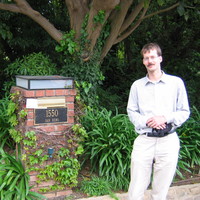Papers by Moshe Florentin
De Gruyter eBooks, Oct 8, 2018
De Gruyter eBooks, Jul 15, 2013
... 72 3.2.0. Introduction ..... 72 3.2.1. Piyyutim ..... 73 Page 10. ... 96 (b) Preference for l... more ... 72 3.2.0. Introduction ..... 72 3.2.1. Piyyutim ..... 73 Page 10. ... 96 (b) Preference for linguistic forms characteristic of the Aramaic piyyutim ..... 99 3.3.1.5. ... 307 (a) wlyla/lyla ..... ...
Late Samaritan Hebrew, 2004
Late Samaritan Hebrew, 2004
Journal of Jewish Studies, 2007
Late Samaritan Hebrew, 2005
Revue Des Etudes Juives, 2012
The Journal of Theological Studies, 2015
Die Samaritaner und die Bibel / The Samaritans and the Bible, 2012

Biblical Lexicology: Hebrew and Greek, 2015
The “Lexicon of Samaritan Hebrew According to the Samaritan Pentateuch Tradition” is a joint proj... more The “Lexicon of Samaritan Hebrew According to the Samaritan Pentateuch Tradition” is a joint project of Moshe Florentin and Stefan Schorch. The project aims at the creation of a scholarly dictionary of the Samaritan Hebrew dialect which is attested in the Samaritan Pentateuch tradition. It will encompass the manuscripts of the Samaritan Pentateuch, the Samaritan oral reading tradition of the Pentateuch, and the early exegetical traditions within the Samaritan community as preserved in the Samaritan Targum, in the Samaritan Arabic translation, as well as in the traditional trilingual word-lists called Ham-Melitz. The dictionary will feature a comprehensive etymological, morphological, and semantic analysis of each lexeme found in Samaritan Pentateuch based on close reading of the Samaritan versions and with cognizance of traditional Samaritan lexicography. Each entry will provide the following data: 1. Lemma; 2. Etymological cognates (including other traditions of Hebrew); 3. Attributed meaning in Samaritan literature (Targum, Arabic translation of the Torah); 4. Morphological inventory; 5. Determination of semantics (with exact references and contextual quotations); 6. Derivates.

Journal of Semitic Studies, 2009
Samaritan Hebrew and Aramaic, though sharing the same phonetic structure, differ mainly in the ch... more Samaritan Hebrew and Aramaic, though sharing the same phonetic structure, differ mainly in the choice of options available in the general Samaritan pronunciation. In the present study we have argued that the use of the auxiliary vowel in general, and specifically the use of the patah furtivum was relatively widespread in Samaritan Hebrew and relatively rare in Samaritan Aramaic. Only this fact caused the large distribution of the vowel u in an open post-tonic syllable in SH versus the clear preference of the vowel o in this position in Samaritan Aramaic. Morpho-phonemic ― alongside historical ― analysis was used thoroughly in this short study. It helped us to prove that: (1) the vowel o of the 3m. s. attached to a plural noun in SH ― e.g. ? sūso ― is genuine in this language, being underlyingly a closed syllable; (2) the reason for the retention of the diphthong aw in the same pronominal suffix in Tiberian Hebrew ― e.g. ? sūsaw ― is purely phonetic, i.e. the long vowel before the semi-vowel (sūsāw).
Late Samaritan Hebrew, 2004
Late Samaritan Hebrew, 2004










Uploads
Papers by Moshe Florentin
The dictionary will feature a comprehensive etymological, morphological, and semantic analysis of each lexeme found in Samaritan Pentateuch based on close reading of the Samaritan versions and with cognizance of traditional Samaritan lexicography. Each entry will provide the following data:
1. Lemma; 2. Etymological cognates (including other traditions of Hebrew); 3. Attributed meaning in Samaritan literature (Targum, Arabic translation of the Torah); 4. Morphological inventory; 5. Determination of semantics (with exact references and contextual quotations); 6. Derivates.